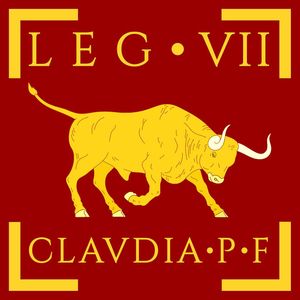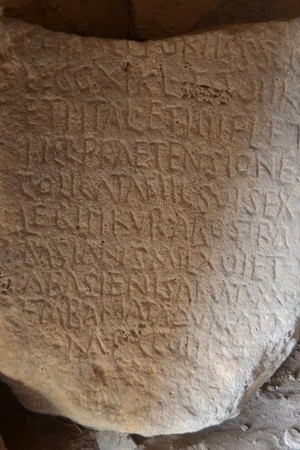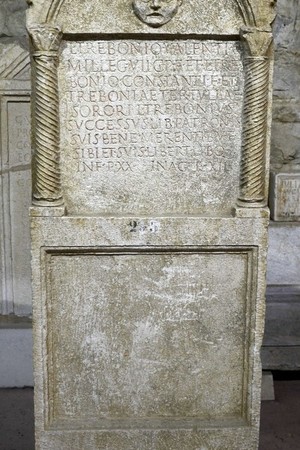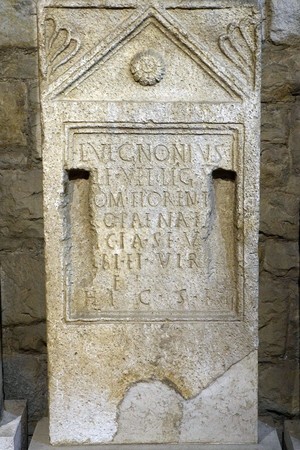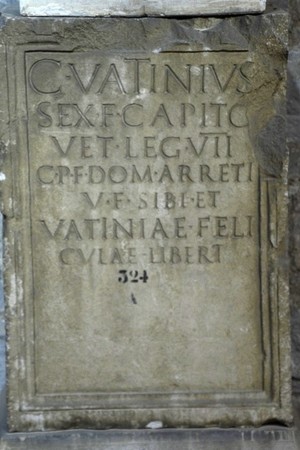Roman Legion - Legio VII Claudia Pia Fidelis
Legio VII Claudia (Seventh Legion Claudia) was a Roman legion formed by Julius Caesar.
Dates of existence: 58 BC. It lasted until the end of the 4th century AD.
Symbols: Bull and Lion
Nicknames: Paterna (Eldest), Claudia (Legion of Claudia), Macedonica (Macedonian), Pia Fidelis (Loyal and Faithful)
Battle Path
- Legio VII was formed by Gaius Julius Caesar in 58 BC for his campaign in Gaul. In its first decade, after its creation, it was known by the cognomen "Paterna" (Eldest).
- The legion had its first battle experience in the Gallic War (58-50 BC), fighting at the Battle of the Sabis (now the Sambre River, in France and partly Belgium) in 57 BC against the Nervii tribe (one of the Belgic tribes). In 56 BC, it took part in the campaign against the Veneti tribe (a group of tribes inhabiting the northern coast of the Adriatic Sea, northeast of the Po River).
- In 56 or 55 BC, along with Caesar, Legio VII participated in two of his campaigns in Britain (the first Roman attempts to conquer the island). At that time, Caesar faced the leader of the British forces named Cassivellaunus. After this, the legion returned to Gaul to continue participating in the Gallic War.
- In 52 BC, the legion fought twice against the leader of the pan-Gallic uprising against Roman rule, Vercingetorix, first at Lutetia (now Paris, France) and then in September at the siege of Alesia (modern-day Alise-Sainte-Reine, France).
- In the Civil War (49-45 BC) that broke out shortly after the Gallic War between Pompey and Caesar, the legion sided with Caesar. In this war, the legion participated in the following battles: the Battle of Ilerda (49 BC, Spain); the Battle of Dyrrhachium (modern Durres, Albania) – 48 BC; and the Battle of Pharsalus (modern Farsala, Greece) – 48 BC.
- Additionally, Legio VII Claudia participated in Caesar's African campaign against his opponents in 46 BC, fighting in the Battle of Thapsus (modern Ras Dimass, Tunisia) in April 46 BC. In 45 BC, Caesar disbanded the legion and settled its veterans near the cities of Capua and Lucis (modern San Luca, Italy).
- After Caesar's assassination in 44 BC, his heir Gaius Octavian Augustus restored the legion, and it fought on his side in the Battle of Modena (43 BC) and the Battle of Philippi (near the modern city of Filippoi, Northern Macedonia) in October 42 BC. Probably, after the Battle of Philippi, the legion received the cognomen Macedonica (Macedonian).
- The legion then returned with Octavian to Italy, where it participated in the siege of Perugia in 41 BC.
- After this, the legion returned with Octavian to Italy, where in 41 BC, it participated in the siege of Perugia. The legion likely took part in Octavian's war against Mark Antony and participated in the Battle of Actium (31 BC).
- After the defeat of Quintilius Varus in the Teutoburg Forest (9 AD), the legion was transferred from Italy to Dalmatia to the city of Tilurium (near modern Trilj, Croatia), and then to the city of Burnum (modern Kistanje, Croatia), where it shared a camp with Legio XI Claudia.
- In 42 AD, the legion participated in suppressing the rebellion of the governor of Dalmatia, Lucius Arruntius Camillus Scribonianus, against the newly enthroned Emperor Claudius (41-54 AD). For suppressing this rebellion, the legion received the cognomen Claudia - "Legion of Claudia," and the title Pia Fidelis - "Loyal and Faithful."
- Soon, this title became the cognomen of the legion - Claudia Pia Fidelis - "Loyal and Faithful Legion of Claudia."
- In 58 AD, Legio VII Claudia replaced Legio III Cyrenaica, which was sent with Corbulo to his eastern base in the city of Viminacium (modern Kostolac, Serbia).
- In the Civil War following the death of Emperor Nero in 68-69 (Year of the Four Emperors), the legion first supported Otho (reigned January-April 69) and fought for him against Vitellius at the Battle of Bedriacum (modern village of Calvatone, Italy), but lost and in April 69 was returned to the Danube. After this, Legio VII Claudia supported Vespasian and participated in the Battle of Cremona (June 69), where it was on the winning side.
- Under Emperor Domitian in 86-88 and Emperor Trajan in 101-102, Legio VII Claudia participated in wars against the Dacians. After the Dacians, the legion took part in Emperor Trajan's Parthian campaign.
- In 116 AD, the legion was transferred from Mesopotamia to Cyprus, where it suppressed Jewish revolts.
- During the reign of Emperor Marcus Aurelius (161-180), the legion participated in all the wars happening then on the Danube.
- In year of the five Emperors (193), the legion sided with Septimius Severus, who became emperor.
- Later, the legion took part in Severus' Parthian campaign (197-198) and participated in the sack of Ctesiphon (near modern Al-Mada'in, Iraq), the capital of Parthia, in 198 AD.
- In the third century , the legion was still stationed in Viminija (present-day Kostolac, Serbia), where it carried out police and border functions in the fight against the Danubian tribes.
- During the reign of Emperor Gallienus (253-268), the legion received the title Pia VII Fidelis VII for supporting him against Postumus. After Gallienus' death, the title granted by him was practically unused in the legion.
- Marcus Postumus was a Roman general who, taking advantage of the problems during Gallienus' reign, declared himself Roman Emperor and created the so-called Gallic Empire (which included the territories of Gaul, Upper and Lower Germany, Britain, and Iberia), becoming its first emperor from 260-269 AD.
- In 273, a vexillation of the legion participated in building a road in Jordan, confirmed by the finding of a stone mentioning Roman units constructing the road near the oasis of Qasr el-Azraq in Jordan. This inscription mentioned Legio VII Claudia.
- During Emperor Diocletian's reign (284-305), the legion accompanied him on his trip to Egypt (the province of Roman Egypt).
- Until the end of the 4th century, the legion was still stationed on the Danube. After this, there are no further mentions of the legion.
Related topics
List of Roman Legions, Legion, Legionnaire, Gaius Julius Caesar, Octavian Augustus, Mark Antony, Legio III Cyrenaica, Year of the Four Emperors, Year of the Four Emperors
Literature
1. Dando-Collins, “Legions of Rome”
2. R. Kanya, A Brief History of Various Legions
3. J.-P. Laporte, "Legion VIIa and the Rule of the Colonies of Augustus Caesar," in: Jan Le Boe, Legions of Rome and the Upper Empire (2000 Lyon) 555-579
4. J. Le Boe and K. Wolf, "Legiones Moesiae Superioris," in: Jan Le Boe, "The Legion of Rome under the Empire" (2000 Lyon) 239-245
5. I. Piso, "Legends of the Province of Dacia," in: Jan Le Boe, Legions of Rome, the Upper Empire (2000 Lyon) 205-225
6. K. Strobel, "Zur Geschichte der Legiones V (Macedonica) und VII (Claudia pia fidelis)," in the publication "State District in Galatia," in: Jan Le Boe, Le-legion-de-Rome-sous-le-Empire (2000 Lyon) 515-52

 Gallery
Gallery






